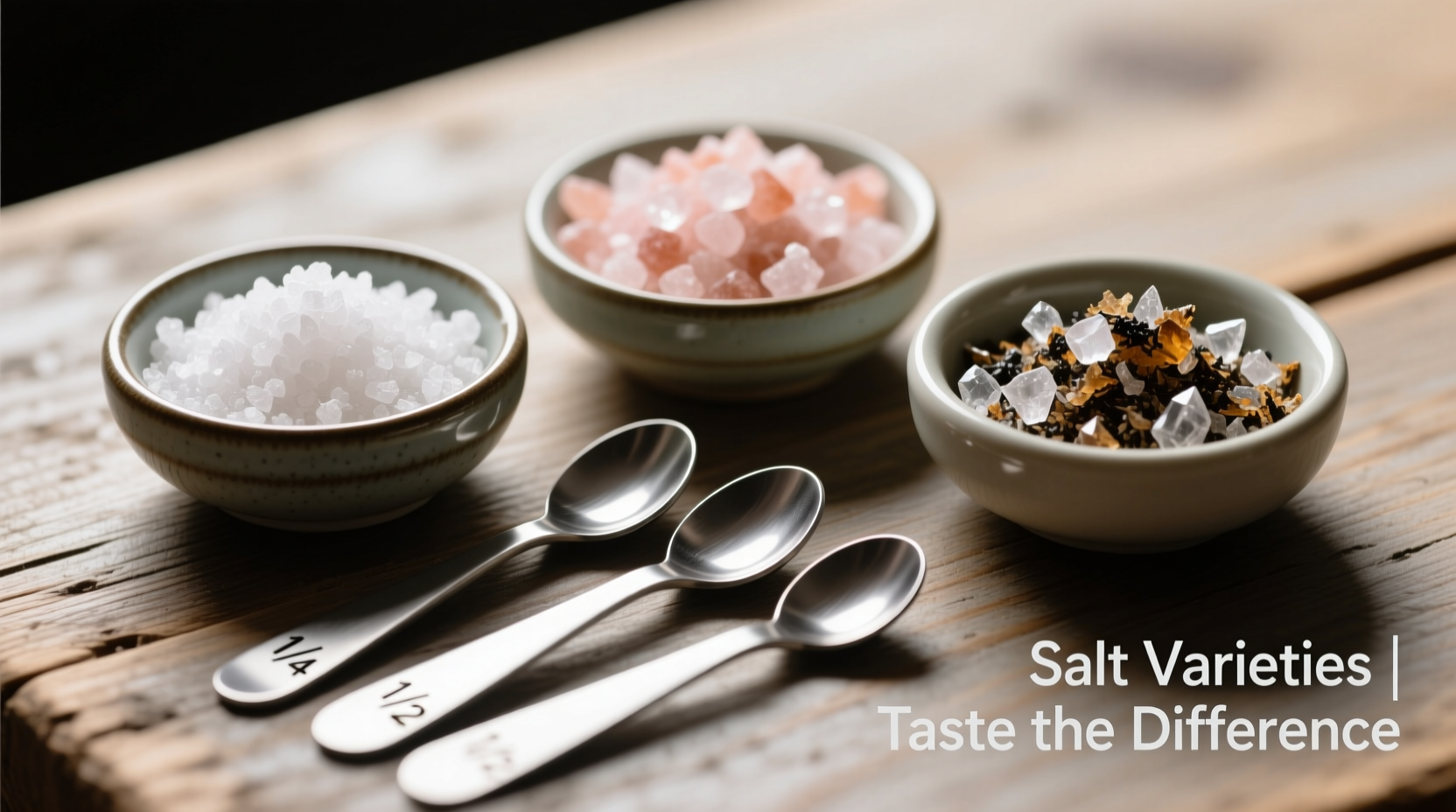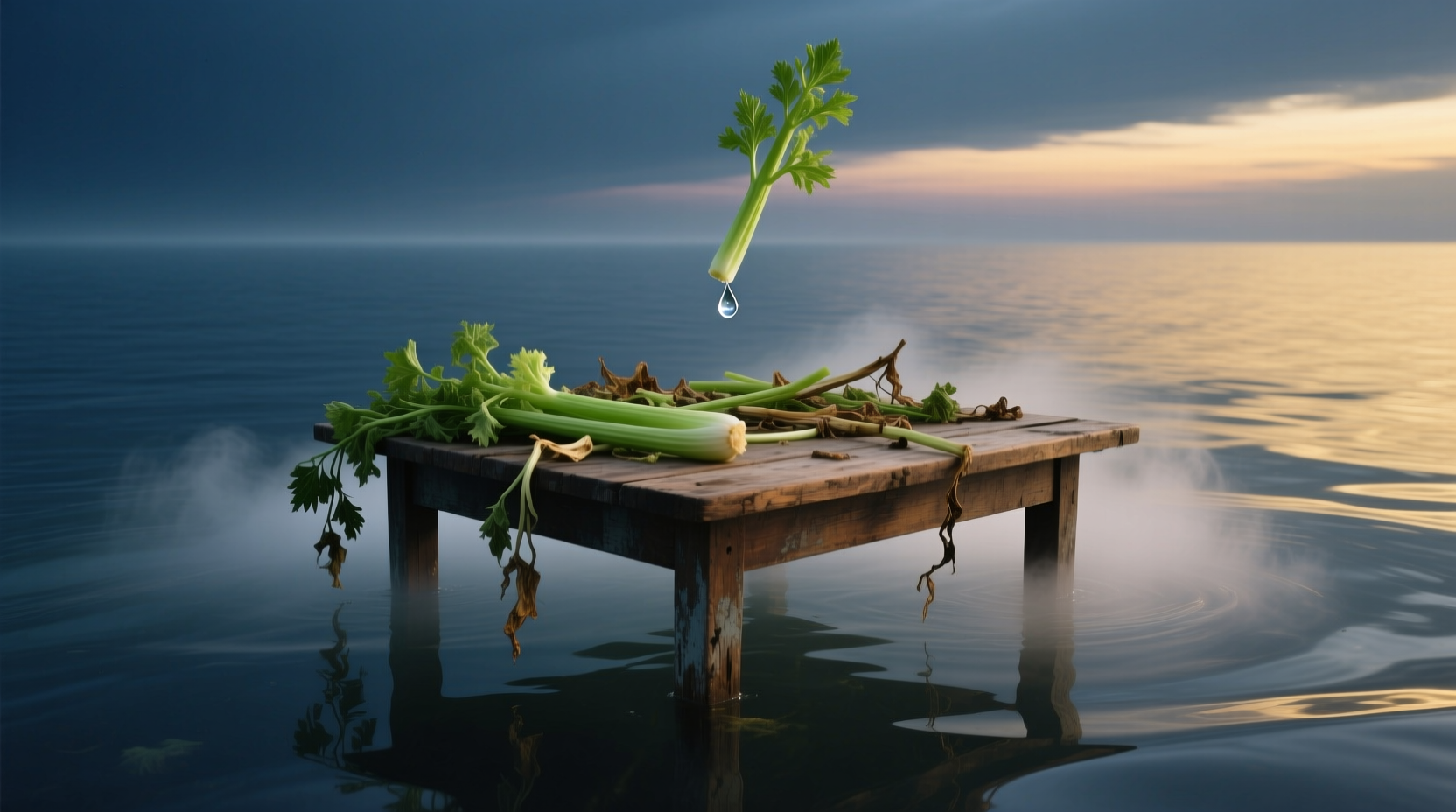When searching for "table sea bath celery," you're likely trying to understand the differences between common salt varieties used in cooking. This guide clarifies the distinct characteristics, culinary applications, and safety considerations for table salt, sea salt, celery salt, and explains why bath salt belongs in your tub—not your food.
Understanding Salt Varieties: What Each Term Actually Means
Many home cooks encounter confusion when recipes specify particular salt types. The terms "table," "sea," and "celery" refer to different culinary salts, while "bath" indicates a completely different product category. Recognizing these distinctions is essential for both flavor development and kitchen safety.
| Salt Type | Composition | Texture | Primary Culinary Uses | Special Considerations |
|---|---|---|---|---|
| Table Salt | Sodium chloride (99%), iodine, anti-caking agents | Fine, uniform crystals | General cooking, baking, table seasoning | Most soluble; measure carefully as density differs from other salts |
| Sea Salt | Sodium chloride (97-99%), trace minerals | Variable (fine to coarse flakes) | Finishing dishes, enhancing texture, specialty applications | Mineral content varies by source; less soluble than table salt |
| Celery Salt | Table or sea salt + ground celery seed | Fine to medium | Cocktails, potato salads, tuna/chicken salads, soups | Provides distinctive herbal note; substitute 1:1 for regular salt where celery flavor complements dish |
| Bath Salt | Epsom salt (magnesium sulfate) or cosmetic blends | Crystalline, often colored/scented | Personal care, muscle relaxation | NOT FOR CONSUMPTION; can cause serious health issues if ingested |
Why Bath Salt Doesn't Belong in Your Kitchen
One critical distinction that cannot be overstated: bath salts are formulated for external use only. According to the U.S. Food and Drug Administration, bath products often contain additives, fragrances, and coloring agents not approved for consumption. Epsom salts (magnesium sulfate), commonly used in baths, can cause severe gastrointestinal distress, electrolyte imbalances, and in extreme cases, magnesium toxicity when ingested.

Practical Salt Selection Guide for Home Cooks
Understanding when to reach for each salt type transforms your cooking results. Professional chefs follow these practical guidelines that account for both flavor development and chemical properties:
Table Salt: Your Kitchen Workhorse
Table salt's fine crystals dissolve quickly, making it ideal for:
- Baking applications where even distribution is critical
- Brines and marinades that require rapid dissolution
- Recipes developed specifically with table salt measurements
When substituting table salt for other varieties, remember that its higher density means you'll need less by volume—typically about 25% less than kosher salt.
Sea Salt: Texture and Finishing Expertise
Sea salt's mineral content varies based on harvesting location, creating subtle flavor differences. The Journal of Food Composition and Analysis notes that Mediterranean sea salts contain higher magnesium and calcium levels than Atlantic varieties, affecting both taste and crystallization. Use sea salt when:
- You want visible texture contrast on finished dishes
- Preparing dishes where mineral content enhances flavor (like grilled vegetables)
- Creating salt crusts for baking fish or meats
Celery Salt: The Flavor Multiplier
Celery salt combines sodium chloride with ground celery seed, creating a distinctive herbal note. Food science research from USDA Agricultural Research Service shows that the volatile compounds in celery seed (particularly limonene and sedanenolide) remain stable when combined with salt, providing consistent flavor. This makes celery salt perfect for:
- Cocktail sauces and Bloody Marys
- Potato and pasta salads where fresh celery might become soggy
- Enhancing savory notes in soups and stews without adding liquid ingredients
Safety First: Avoiding Dangerous Confusion
The most critical context boundary involves never substituting bath salts for culinary salts. The Centers for Disease Control and Prevention reports multiple cases of accidental ingestion requiring medical attention. Always store bath products separately from food items, and consider labeling containers if you keep edible salts in non-original packaging.
When Substitutions Work (and When They Don't)
Understanding salt chemistry prevents recipe failures. While table salt and sea salt can often substitute for one another with measurement adjustments, celery salt serves a completely different purpose. Never replace regular salt with celery salt in baking recipes, as the herbal notes will overwhelm delicate flavors. Similarly, don't use iodized table salt for brining pickles, as the iodine can cause discoloration.
Practical Salt Storage Tips
Proper storage maintains salt quality:
- Keep all culinary salts in airtight containers away from humidity
- Add a few grains of rice to salt shakers to prevent caking
- Store celery salt separately from other salts to preserve its distinctive flavor
- Label all containers clearly, especially if repackaging











 浙公网安备
33010002000092号
浙公网安备
33010002000092号 浙B2-20120091-4
浙B2-20120091-4